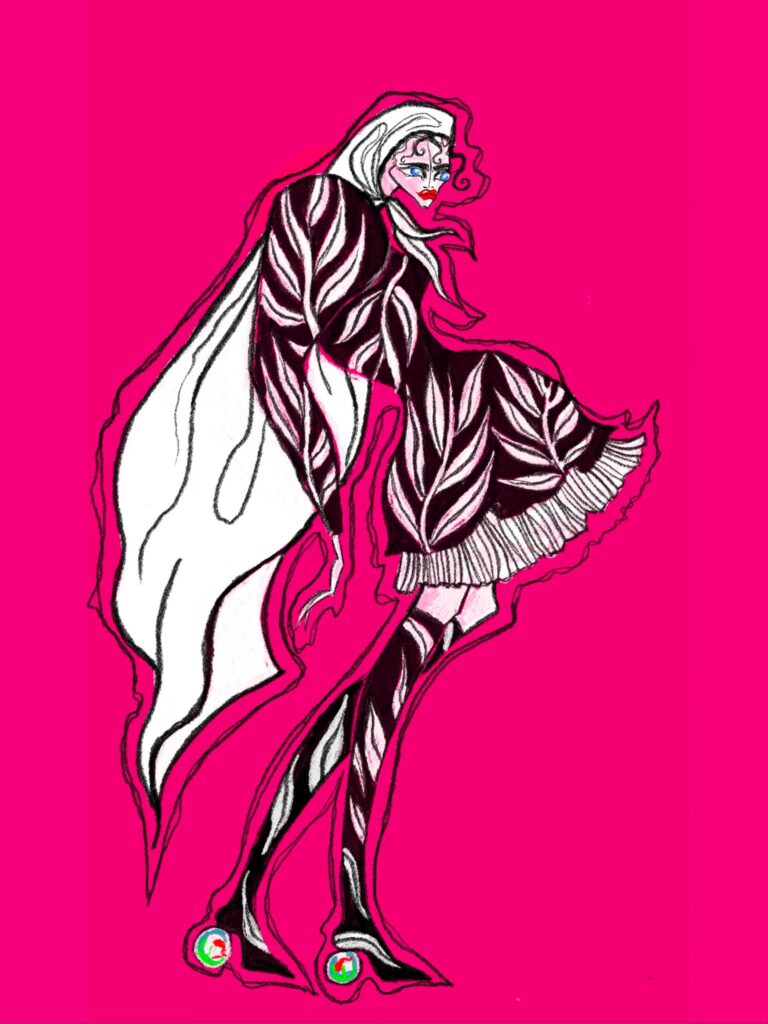The New Rochas Allure
This season’s Rochas show starts in the early hours of the morning, where its characters, coquettish young women, indulge in extended revelry. While the presentation took place on a Wednesday afternoon, Charles de Vilmorin was fixated on an after-party under the cloak of darkness. Now in his third season at the 97-year-old French maison, he delivered his most alluring edit to date.
For Spring-Summer 2023, fashioned a wardrobe that exists somewhere betwixt the mythical Folies Bergère, the nightclub, the streets of Paris, and the secret after party. A fuchsia minidress is in full bloom with ruffles. Sweater vests and billowing gowns are emblazoned with Matisse-inspired cats. Cascading ruffles trace the silhouette of a pencil skirt and shimmering organza drapes over ensembles with the ceremony of a Christo installation. A layered cape is worn over lean trousers printed with falling leaves. A utilitarian streak runs throughout, in cotton, wool, and, for the first time, denim. “I wanted it to be fresh, younger and more fun,” de Vilmorin, situated in his Paris apartment, shared over Zoom.
What direction are we heading in for this season?
The last collection was very dramatic and dark. This one is a lot more colourful. The story around the collection is set at an after-party, it’s the end of the night, and the beginning of the morning. The girls danced all night, but it’s still super chic. [Rochas] is a very old brand. When I was a child, my grandmother used to wear their perfumes so I’ve known about it for a long time. For me, it’s a very classic and familial brand. My goal is to make this brand cooler, younger, and artistic, but to create something that respects the best of the brand.
How important is exploring new themes and concepts in your work?
This time I wanted to tell another story. The woman is a bit more fresh and a bit younger. I really wanted to show another aspect of the brand. It was important to create this new character and imagine this story. There’s a lot of fresh fabrics like cotton, organza, and denim, for the first time. It’s a little less sophisticated but more conceptual, especially with the volume. For the styling and the music, it’s about the location: the Folies Bergère, a mythical theater in Paris with lots of details in gold and red. We’re using white fabric to cover everything from chandeliers to the stairs, like the artist Christo.
There’s a strong sense of drama and ceremony in your work. What draws you to that?
It comes from references from when I was a teenager and my idols were Alexander McQueen, John Galliano, Viktor & Rolf, Mugler. I love it when fashion meets art and cinema and theater. I love to use all these different elements to make fashion.
How are you balancing commercial demands with creativity?
I love to create more commercial collections, too. For example, I love to make the pre-collections for Rochas. You need to create something accessible but different. Today, there are a lot of brands and a lot of products, so the challenge is to find out why someone wants to buy your jeans as opposed to someone else’s. I get very excited when I see my dresses in magazines, but I also like the capsule collection that I did with 24S which was more commercial. Or when I see one of my pieces on the street or on Instagram. In the end, it’s a different feeling, but it’s still exciting.
Some designers talk of exploring the world around them — places, culture, issues while others explore internally — feelings and responses. Tell us what comes more naturally to you.
Both are very important. Movies you see, places you visit, even people that you meet – this is what creates your integrity, so we need both to imagine new things.
Is this something that comes naturally to you?
I love to be inspired by very real things like movies or songs. I love to put different references in each of my projects. In this collection, one of the principal elements is the cats printed on knitwear, inspired by the artist Matisse.




